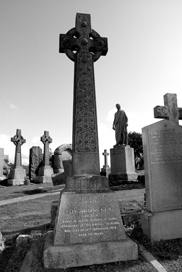Leon Jablonski Platt
Dental Surgeon
1840 – 1914
Leon Jablonski Platt was Stirling’s first resident dentist and set up in business in 1861.
Despite his Christian names, L. J. Platt came from a family of English musicians on his father’s side and Scottish vintners on his mother’s. He was born in Edinburgh in 1840, the twelfth of fifteen children of whom only two survived to adulthood. His aunt, Sophia Platt, married a Polish gentleman, Leon Jablonski, after whom L. J. Platt may have been called, although he was born two years before that marriage took place.
Leon studied dentistry at Edinburgh University and came to Stirling in February 1861 where for the course of his career his practice was at 44 Murray Place.
Poor oral hygiene concerned him to the extent that within a year of his arrival in Stirling he had produced his first book – ‘The Domestic Guide to a Good Set of Teeth’.
He held surgeries in Dunfermline and Crieff, and his Stirling practice included members of the Drummond and Shearer families. These are carefully noted in Mr Platt’s ‘Professional Diary’ but his staff were less discreet , referring to other patients as ‘Mr Humphyback’, ‘Mrs Dirty Face’, and the easily-imagined ‘Mrs Hatchetface’. Treatment ranged from a modest ‘Repair’ costing 3/6d to a full set of gold teeth at £25.
Having acquired a business partner, R K Common, some years previously Mr Platt retired in 1901; he bought ‘The Birches’ in Victoria Place in whose 14 rooms he was able to display his collection of paintings and ‘objets d’art’. An enthusiastic numismatist, he wrote ‘The First Silver Coinage of Rome’, then the definitive work of its kind.
Mr Platt died on 15th September 1914. He left his books to the Public Library and his collection of ‘objets d’art’ to the Smith Institute. At the outbreak of World War One the Institute was commissioned for military purposes and was unable to accept the bequest. Afterwards, the Minutes note sadly that the collection was too great for the Museum’s storage capacity; although Mr Platt’s collection of paintings is in the Smith, most of the ‘objets’ were sold and the collection was scattered.
Currently the firm of Platt and Common continues to care for Stirling’s teeth, and this handsome memorial, with its monogrammed cradle, is the resting place of one who strove to improve the health and well-being of earlier residents of the Royal Burgh.

